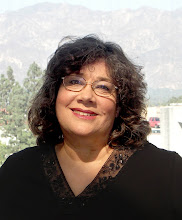
As we prepare for the
Great Southern California ShakeOut on Nov. 13, there are a lot of questions out there, including in comments on my previous blog posting about earthquake safety.
Let me debunk some myths for you. Actually, I'm not the debunker; that has been done by seismology, geology and engineering experts over the past several years.
MYTH: During an earthquake, get in a doorway.
FACT: There used to be a popular old photo of a collapsed adobe home with the doorframe as the only part left standing. This led to a belief that a doorway is the safest place to be during an earthquake. That's only true if you happen to live in an old, unreinforced adobe building! In all other buildings, a doorway is usually no stronger than any other part of the structure, and open doors will usually swing wildly during earthquakes. You're safer under a table or desk.
MYTH: The "Triangle of Life" is the safest position to assume during an earthquake.
FACT: This controversial position has been proven to be unsafe during an earthquake. It is based on the assumptions that your building will completely collapse and that there will be a specific pocket of safety in a specific location. Don’t believe it! The
Drop, Cover and Hold On method has been proven time and time again to be the best technique for survival. One of the examples given by the
perpetrator of the Triangle of Life myth is a school building in Mexico City that completely collapsed during a major earthquake in 1985: “Every child was under their desk. Every child was crushed to the thickness of their bones.” Don’t believe it! The fact is that school was not in session that day so there were no children present...

...and a photograph of the school taken after the earthquake made one thing abundantly clear:
All of the desks were still in place! If the children had been in school that day and if they had taken the Triangle of Life position, they could have been killed by falling debris. However, if school had been in session that day and they had gone under their desks, they would have survived.
MYTH: During a major earthquake, the earth can open up and swallow cars, towns and people.
FACT: That's a popular literary device used in novels and movies, but the fact is that the ground moves across a fault during an earthquake, not away from it. If the fault could open, there would be no earthquake.
MYTH: An earthquake rupture follows train tracks.
FACT: Train tracks are located on top of the earth's surface and faults are located below the earth's surface. When faults are rupturing, they don't care where the train tracks are.
MYTH: There's such a thing as earthquake weather.
FACT: Weather is above the surface of the earth and earthquakes begin far below. There is no correlation between the two.
MYTH: Major earthquakes happen early in the morning.
FACT: Some major earthquakes, like Northridge, have happened in the early a.m., but that's certainly not true of all major quakes. For example, the 1992 Joshua Tree earthquake happened at 9:50 p.m. and the 2003 San Simeon quake was at 11:15 a.m. The factors that vary between the time of day, the month, or year do not affect the forces in the earth that cause earthquakes.
MYTH: There will be mass panic during the next "big one."

FACT:
Not if we're all prepared!























